The Long Island Iced Tea, the Martini, the Tequila Sunrise. The stories these names bring to you probably include numerous crazy nights of deliciously drunken merry-making (and possibly a few forgotten on account of being more than tipsy).
Well today, we’ve got some other stories, just as fascinating, that are associated with these most popular of cocktails – those of their origin. Be sure to order yourself a tall glass of ‘impressed’ before you read on.
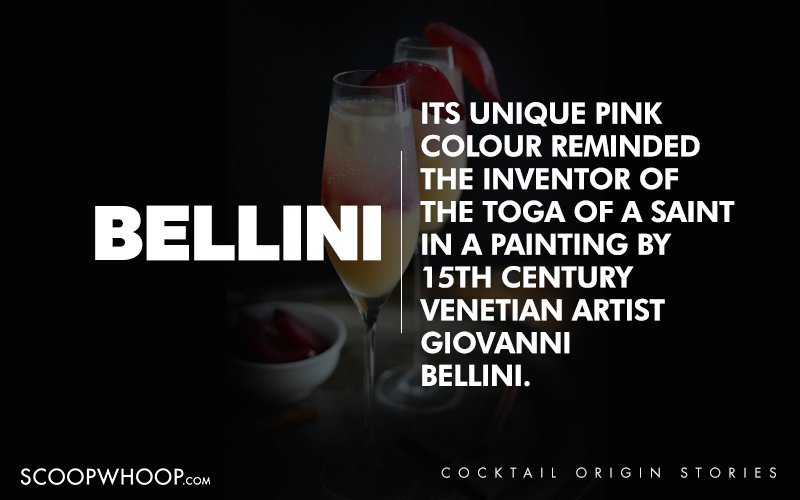
Its inventor was Giuseppe Cipriani, the founder of Venice’s famous Harry’s Bar and the drink started as a seasonal speciality here, a favourite haunt of Ernest Hemingway, Sinclair Lewis and Orson Welles.
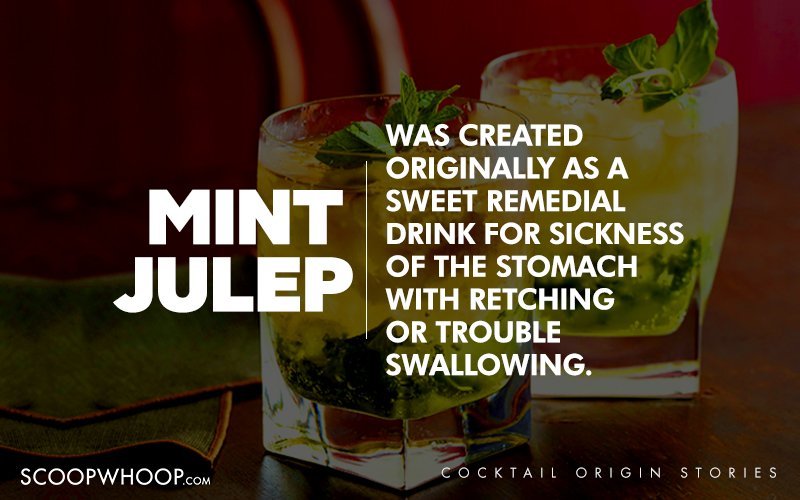
Although nowadays it refers almost exclusively to a cocktail of bourbon whiskey (or, more controversially, brandy) flavoured with sugar and mint, the term “julep” is generally defined as a sweet drink, particularly one used as a vehicle for medicine. The word itself is derived from the Persian word, meaning rose water.
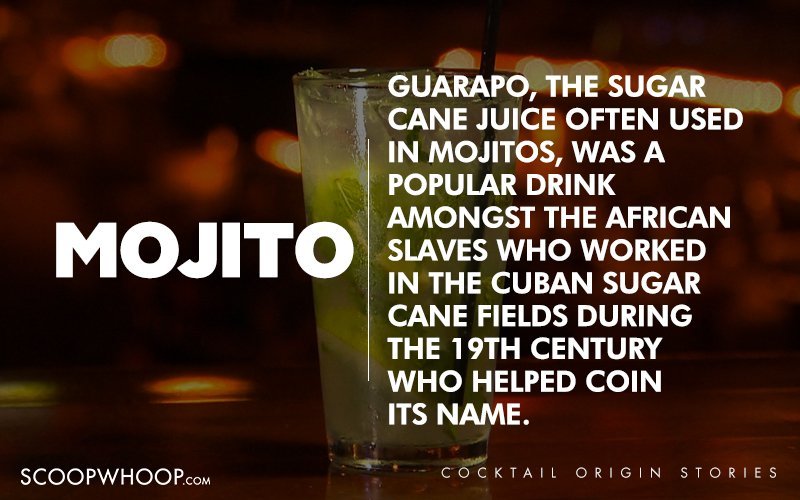
Although debate rages over the exact origin of the Mojito, the Oxford English Dictionary claims it takes its name from mojo, the Spanish name of a Cuban sauce or marinade made from a citrus fruit – a mojito is literally a “little mojo.”
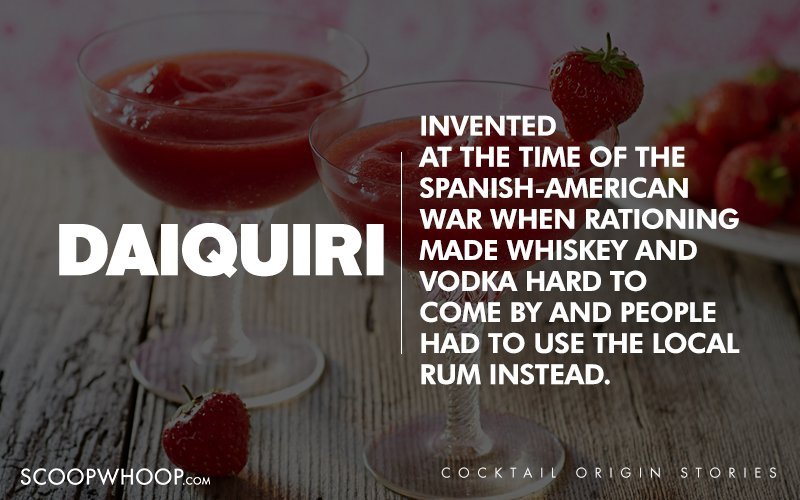
Consumption of the drink was rather limited until 1909, when Rear Admiral Lucius W. Johnson, a U.S. Navy medical officer, tried it and was impressed, subsequently introduced it to the Army and Navy Clubs. Interestingly, the cocktail is named after the village of Daiquirí on the far southeast coast of Cuba.
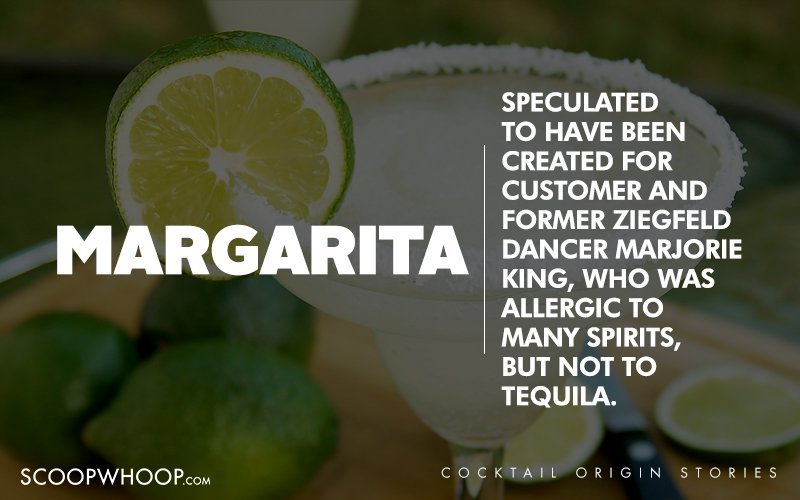
Other possible namesakes of the Margarita include the singer Peggy (i.e. Margaret) Lee, and Margarita Henkel, the daughter of a former German ambassador to Mexico. But in fact the cocktail might not be named in honor of anyone at all – margarita is the Spanish word for “daisy,” and so one theory claims the drink was simply a variation of an earlier Texan cocktail called the “tequila daisy.”
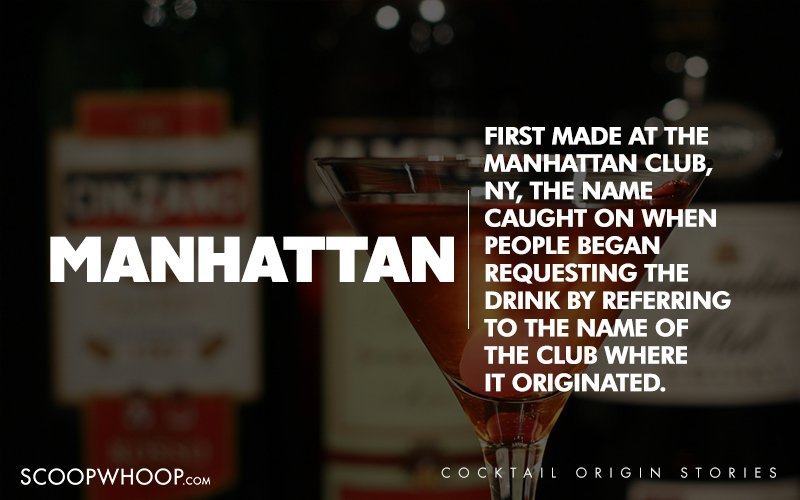
Although accounts of the event are debatable, legend has it that ‘the Manhattan cocktail’ was specially invented for a banquet hosted by Lady Randolf (mother of Winston) Churchill at the trendy Manhattan Club in New York in the late 1800s. The recipe calls for whiskey, vermouth, and bitters, and some say it may have been the first cocktail made with vermouth.
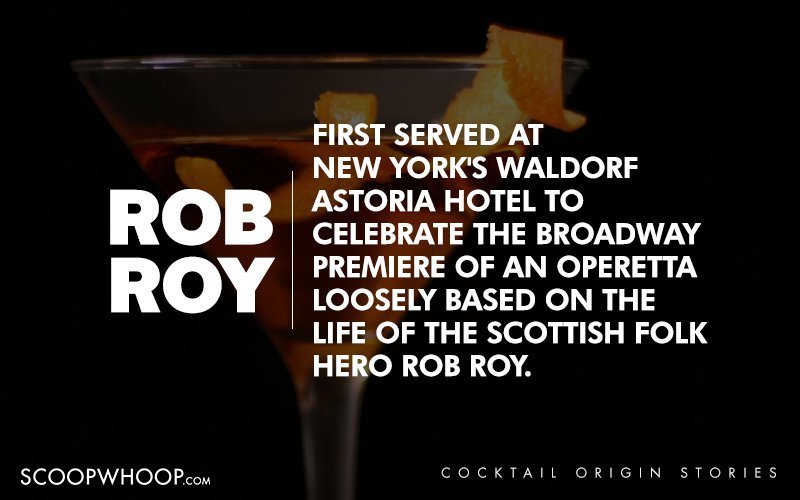
A Manhattan made with Scotch rather than Canadian whisky is a Rob Roy. Robert Roy MacGregor, a Scottish folk hero of the early 18th century (think Robin Hood with a brogue) and the drink, similar to a Manhattan, was concocted for opening night at the hotel in 1894. As with many cocktails, there are various versions, but the basic ingredients are Scotch whisky, sweet vermouth, and a dash of bitters.
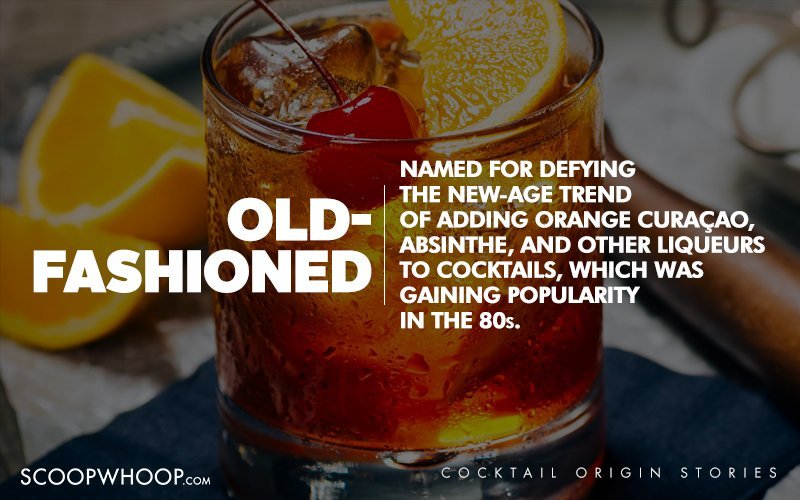
After the rising popularity of the new bartending trend, the original concoction of whiskey and bitters, albeit in different proportions, came back into vogue and was referred to as ‘old-fashioned’.
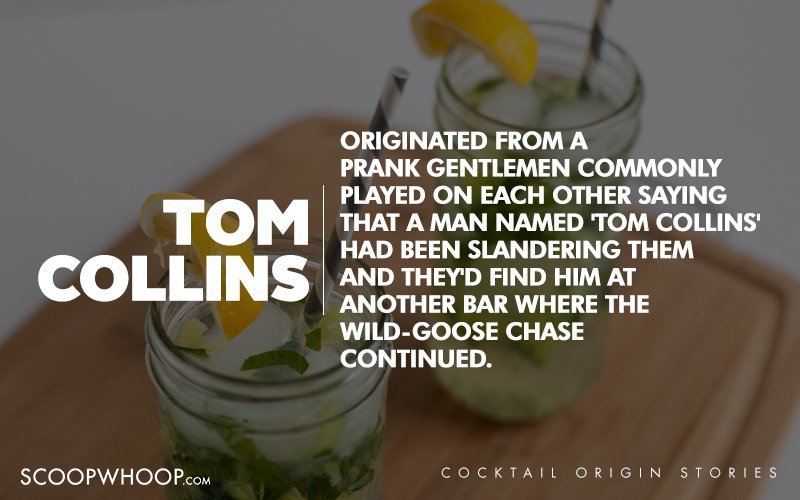
The premise of the 19th century prank was that a gent would encounter a friend and tell him that a fellow by the name of ‘Tom Collins’ had been saying hurtful and slanderous things about him at a particular watering hole. The friend would rush to the bar, where the bartender was in on the joke, and be told that ‘Collins’ had moved on to another bar across town, where the futile pursuit would continue. The hoax spread across the country, and pretty soon, the theory goes, the drink followed, with the bartenders handing over the gin cocktail to the gentleman rather than playing along.
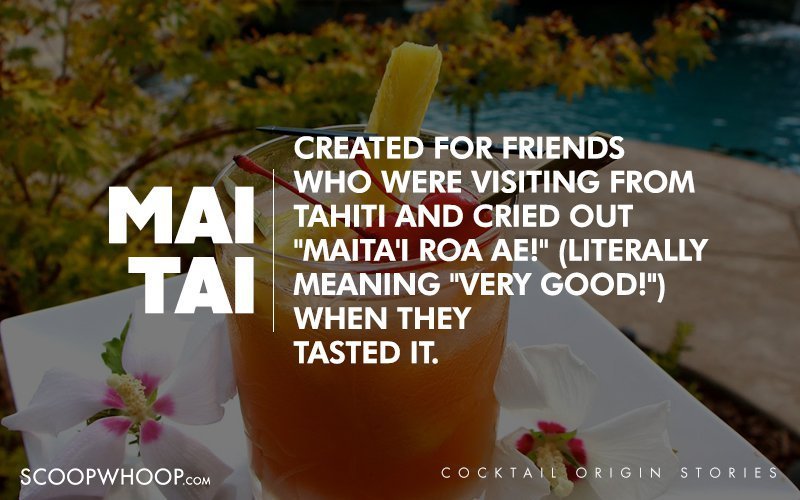
Victor J. Bergeron claimed to have invented the Mai Tai in 1944 at his eponymous restaurant, Trader Vic’s in California. It was created one afternoon for some friends of Bergeron’s Tahitian friends, who ended up accidentally naming the drink through their compliment. Mai Tai means “good” or “nice” in Tahitian and is based on rum, Curaçao liqueur, and lime juice, associated with Polynesian-style settings.
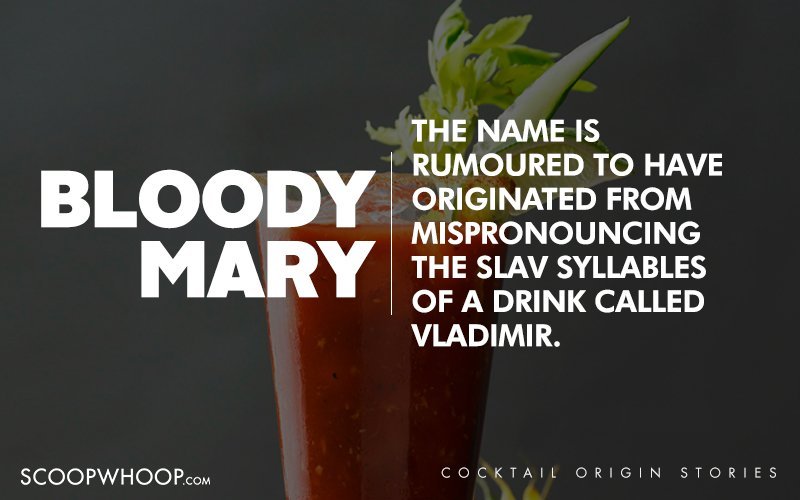
This argument gains some credibility from the observation that the customer at Harry’s Bar in Paris for whom Fernand Petiot prepared the drink in 1920 was Vladimir Smirnov, of the Smirnoff vodka family. Other theories include it being named after a number of historical figures including Queen Mary I of England, Hollywood star Mary Pickford and even a waitress named Mary who worked at a Chicago bar called the Bucket of Blood.
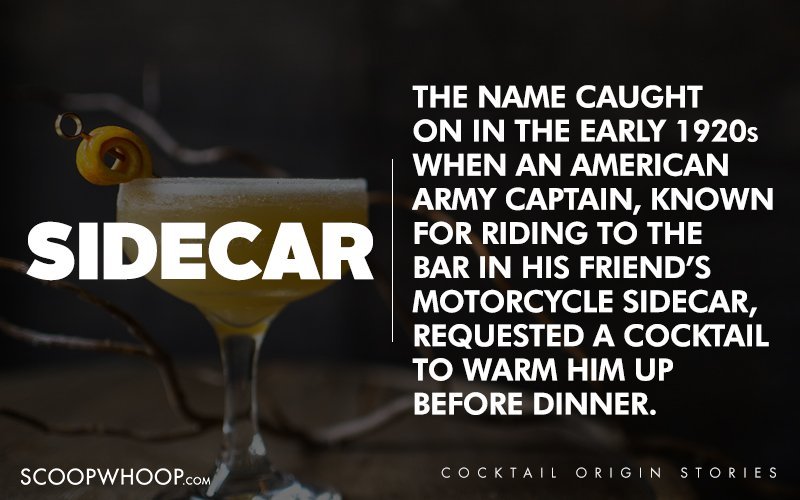
Although the origins of the Sidecar cocktail are hazy, this story claims that it was invented in Paris just after World War I. According to other theories, the name itself is said to be derived from the motorcycle attachment of the same name.
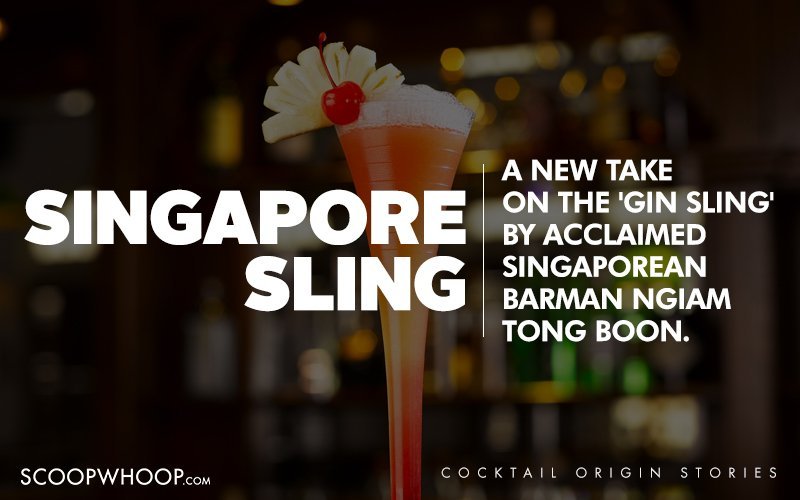
Sling is a general name for any sweetened and flavoured drink made from a spirit base. It was invented in the early 1900s at the famous Raffles Hotel in Singapore by Boon and was subsequently enjoyed by celebrities from Noel Coward to Somerset Maugham.
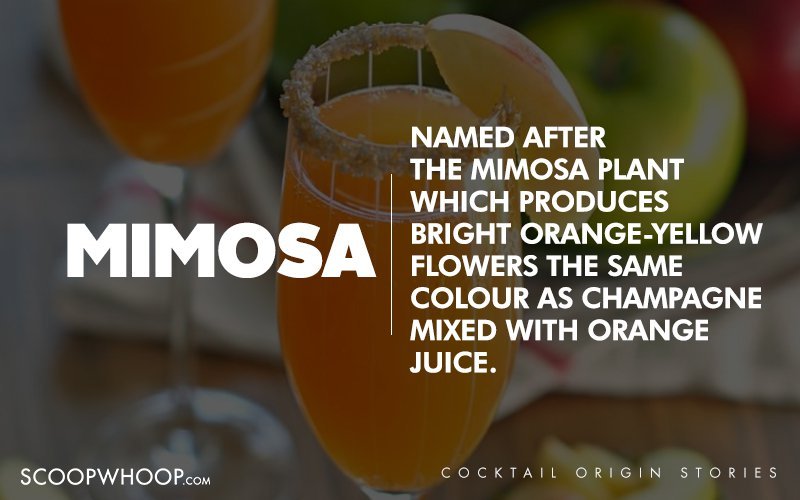
It is believed to have been invented circa 1925 in the Hotel Ritz Paris by Frank Meier. The mimosa takes its name from the mimosa plant, Acacia Dealbata, native to south-east Australia, and found widely in Mediterranean, warm temperate and highland tropical landscapes.
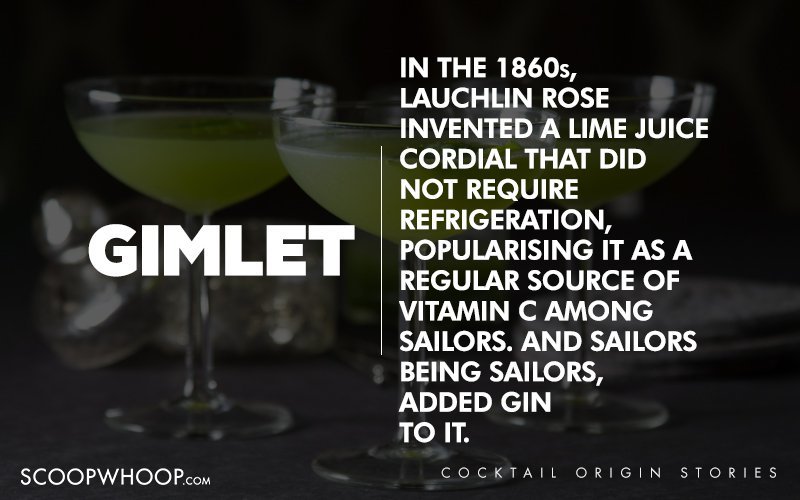
The most popular origin story for this lime-juice-and-gin concoction involves the invention of a lime juice drink by a Mr.Lauchlin Rose in the 1860s. ‘Gimlet’, originally a tool used on ships, was named because of its ‘sharp’ taste. The drink did not need refrigeration making it a source of vitamin C for the sailors of the British Royal Navy who risked contracting scurvy.
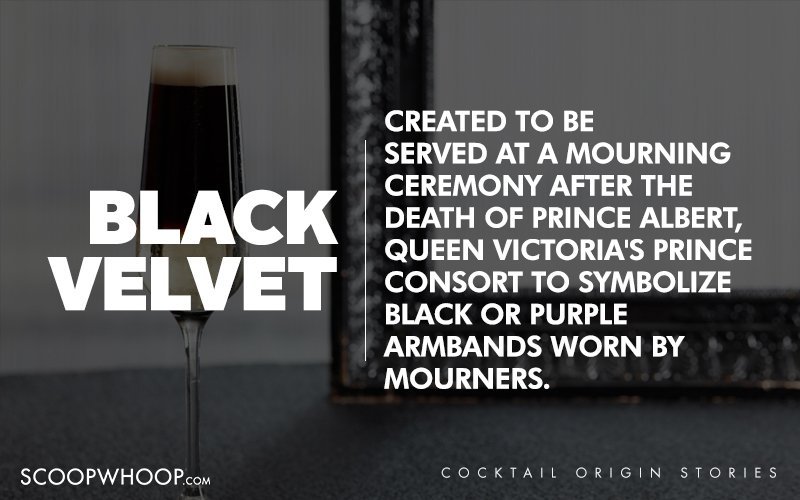
The Black Velvet is a beer cocktail made from stout (often Guinness) and sparkling wine, traditionally champagne. The drink was first created by the bartender of Brooks’s Club in London in 1861.
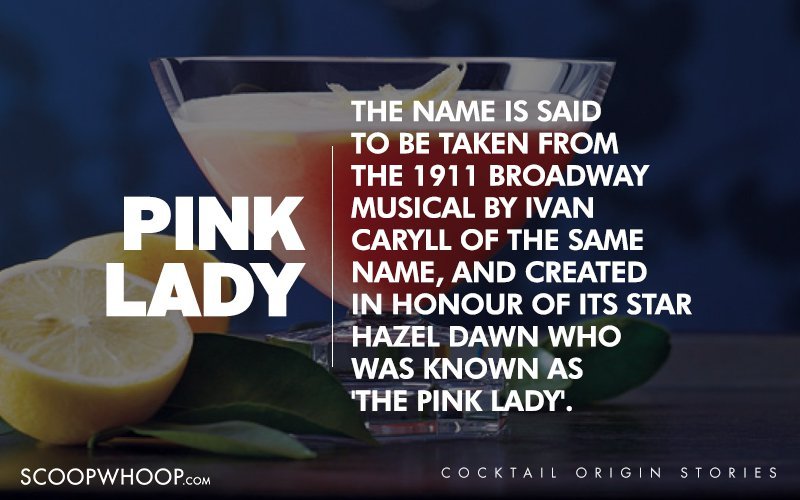
Its invention is attributed to the interior architect and prominent society figure Elsie de Wolfe (1865-1950), but the recipe associated with her nevertheless differs from the common recipes for the Pink Lady.
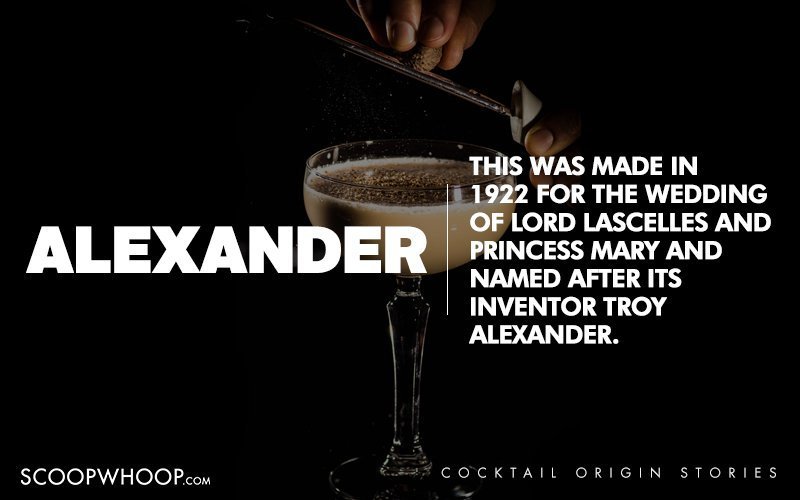
The history of its invention is as blurry as its effects after consuming a few, but theories cite it being created in the 1910s at the New York restaurant Rector’s by a bartender named Troy Alexander.
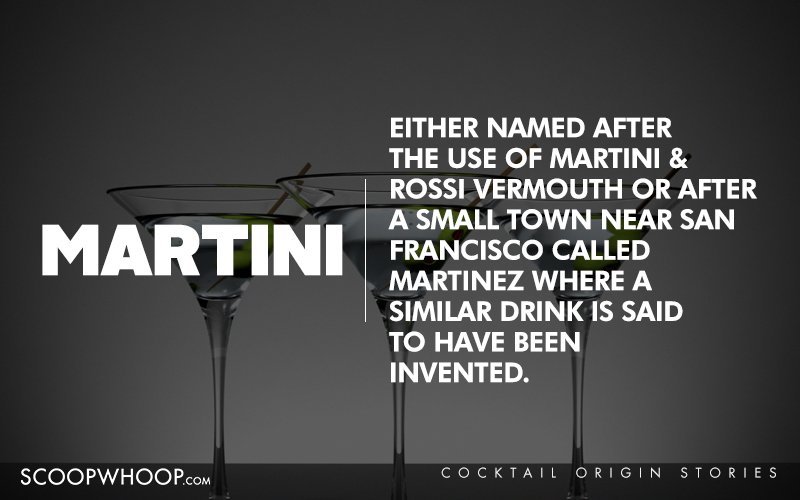
There are conflicting stories on how the Martini got its name, but the most logical is simply the result of using Martini & Rossi vermouth and gin in its creation. Alternatively, another popular theory suggests it evolved from a cocktail called the Martinez served sometime in the early 1860s at the Occidental Hotel in San Francisco, which people frequented before taking an evening ferry to the nearby town of Martinez.
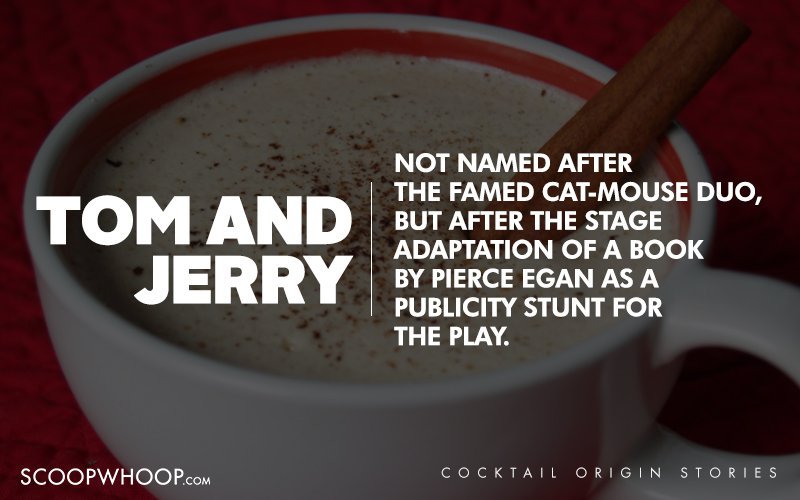
The popular Christmas-time cocktail was not named after the ever-warring cat and mouse in the Tom and Jerry cartoons. Instead, an eggnog-ish concoction mixed with brandy and sugar and served hot was reportedly invented by British journalist Pierce Egan, author of a popular novel of the time with a long, tongue-twisting title. After the book was adapted into a stage production, with the more manageable title of Tom And Jerry, or Life In London, it’s said that Egan created the drink as a publicity stunt.
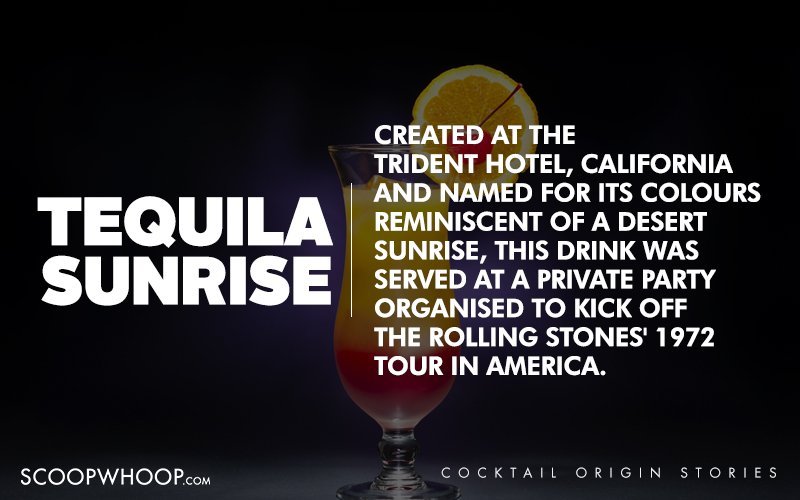
Created by Gene Sulit in the 1930s or 1940s, this mixture of tequila, crème de cassis, lime juice and club soda and garnished with fruit, this drink is said to have been named after the mixture of colours in a tall glass evokes an actual desert sunrise for many. Or maybe it just looks like a sunrise after imbibing a few.
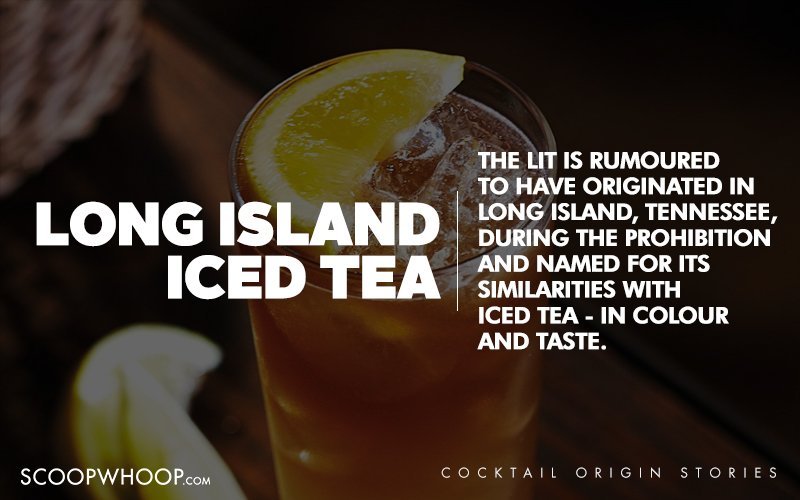
This cocktail is said to have been an invention of Old Man Bishop, who lived in Long Island, Tennessee and then later perfected by his son Ransom Bishop. At a time when alcohol consumption had to be kept low-key it is no wonder the father and son did not brag about their invention. Other stories say it was created by Robert “Rosebud” Butt as an entry in a contest to create new drinks in 1972 while he worked at the Oak Beach Inn in Long Island, NY.

















